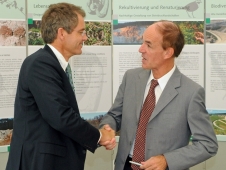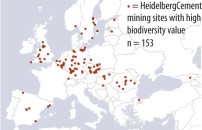
As a first step towards a broader strategic partnership between BirdLife International and HeidelbergCement, a study has been undertaken to identify where mining operations throughout Europe and Central Asia come into contact with important sites for biodiversity including Important Bird and Biodiversity Areas, Protected Areas and Natura 2000 sites. This work is helping to understand common interests and prioritise conservation action on the ground.

A collaborative study between BirdLife International and HeidelbergCement covered 425 mining sites in 20 European and Central Asian countries. It identified 10 European countries as priorities for future strategic engagement as they contain a large number of quarry sites that coincide with areas of biodiversity value.
The study identified 153 mining sites as potentially having high biodiversity value based on their proximity to important locations for biodiversity, such as Important Bird and Biodiversity Areas (IBAs), Protected Areas and Natura 2000 sites. By ranking all mining sites based on a combination of their biodiversity value and a measure of the opportunities for site action, it was possible to identify a subset of sites where joint action is likely to have the most impact and success.
As a direct result of the study the following on-the-ground actions have been proposed:
The study forms the first step of a broader three year partnership between BirdLife international and HeidelbergCement to:
Related Case Studies in other sections
Links
Compiled: 2013 Copyright: 2013
Recommended Citation:
BirdLife International (2013)
Developing strategic partnerships with industry to reconcile business and biodiversity objectives.
Downloaded from https://datazone.birdlife.org/developing-strategic-partnerships-with-industry-to-reconcile-business-and-biodiversity-objectives on 23/12/2024